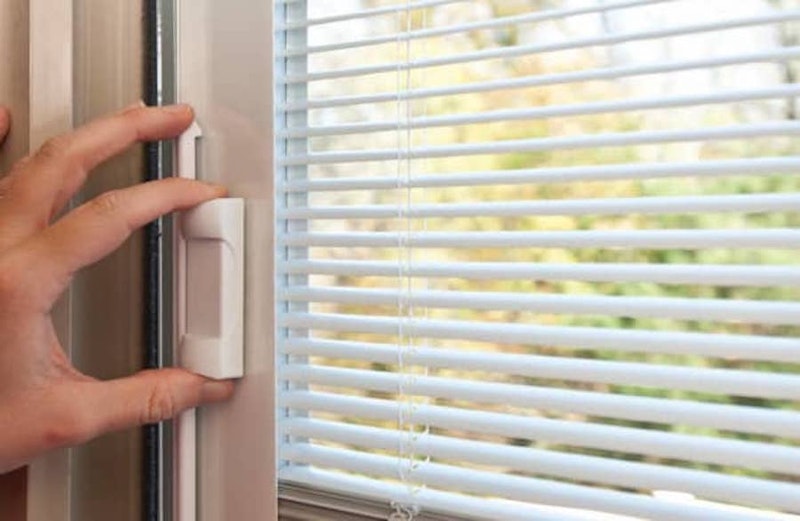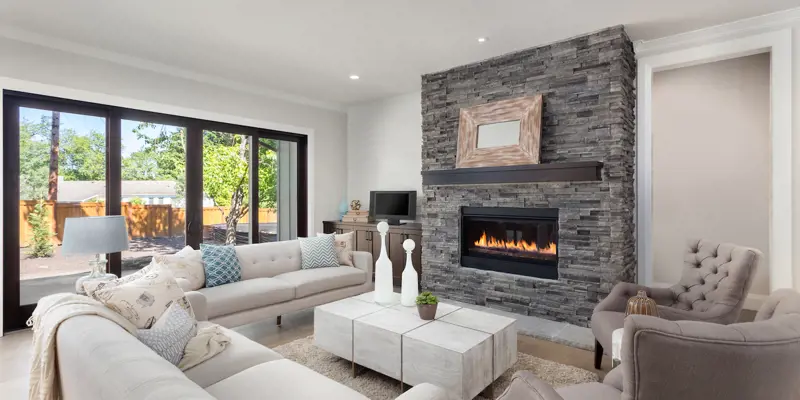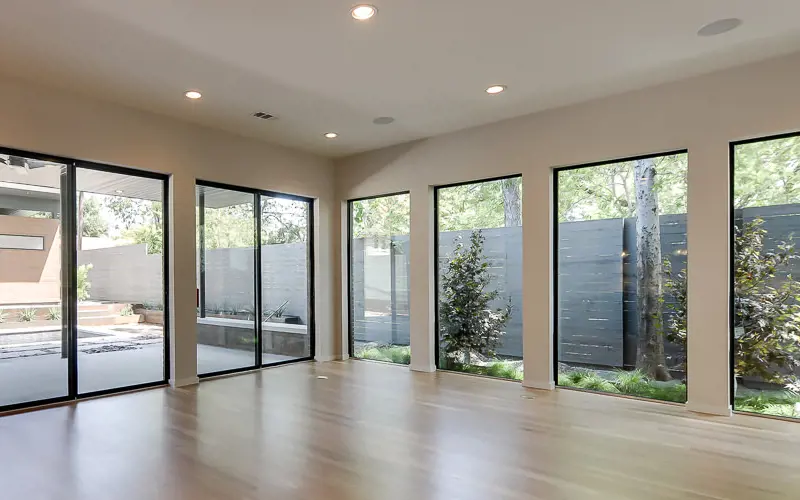
Pros & Cons of Windows Built In Blinds
Window coverings provide two essential functions. They help control the amount of light that can enter a room during the daytime and help protect your privacy at night when your lights are on. Blinds are a common solution for both issues and come in a variety of styles and designs. In some cases, they are used in place of traditional window curtains. Although they do have aesthetic appeal, they can be difficult to clean, hard to operate and even be a safety hazard in some cases. Windows with built-in blinds are becoming increasingly popular among homeowners. But are they for everyone? We'll examine the benefits and drawbacks of built-in blinds so you'll know what to consider.
Use the links below to jump ahead in the post:
What are built in blinds?
Traditional vertical blinds, also called Venetian blinds, are hung in front of the glass on the interior side at the head or top of the window and are designed to raise, lower, and tilt.
Roller blinds are solid cloth that gather on spring rollers when tugged and released. In some cases, blinds may be built like shutters that can be opened or closed from the interior and the slates can be tilted open or closed like traditional vertical blinds.
The common feature of all of these types of blinds is they are on the external side of the glass. Built-in blinds differ in that they are installed in between the panes of glass and are inside your window.
How are built in blinds controlled?
There are several methods for operating windows with built-in blinds. Some use a traditional pull cord to control the slats similar to Venetian blinds while others have a slider switch that uses magnets.
The slider is on a track next to the window and moves up and down horizontally. When the slider is raised to the top of the track, the blinds are open and they are closed by moving the switch to the bottom.
They can be partially opened by leaving the switch somewhere in the middle. Many modern blinds use motors that might use a drive belt, gears, pulleys, or rods to control the function of the blinds.
Some use switches, buttons, or levers installed near the windows. The most modern versions are often controlled by either a remote or a smartphone app.
Types of built in blind controls
- External pull cords
- Magnetic sliders
- Motorized
Advantages
In general, there are several advantages to built in blinds. In recent years, technology has advanced for both window construction and built in blinds and there are new models coming out on the market all of the time, each with its own unique features and benefits.
Most built in blinds offer convenience. Unlike conventional blinds that can tangle or can be difficult to operate, built in blinds are quick and easy to operate using sliders, buttons, or the tap of a smartphone screen, eliminating the fuss of one side being higher than the other or difficulty in getting the blinds set exactly where you’d like them.
Built in blinds are generally safer because most eliminate dangling cords and the blinds themselves can not entangle young children or pets. Everything is safely between the panes of glass keeping them out of reach of tiny hands and paws.
According to a 2017 article in the Journal of Pediatric Studies↗, 300 children under the age of 6 were fatally injured and 2,000 others were injured by cords from blinds between 1990-2015.
In addition to safety concerns, external blinds can be damaged, particularly by indoor pets like cats and dogs and young children. Built-in blinds also offer easier maintenance than their traditional counterparts. Cleaning Venetian blinds can be quite a chore when they collect dust.
Built in blinds in windows greatly reduce and in some cases can eliminate this need altogether.
For some models, the window can be disassembled so the blinds can be changed out or cleaned. This type of built in blind may only need to be cleaned once or twice a year since the glass protects the slates from dust and grime.
In other situations, the blinds are sealed between the glass and do not require any maintenance or cleaning at all.
- Convenience
- Safety
- Protection from damage
- Cleaning and maintenance
Disadvantages
As mentioned above, there have been quite a few developments for the technology behind built in blinds recently. Nonetheless, there are still some drawbacks. Not all of these points will apply to every model or brand and are general in nature.
One of the major disadvantages of windows with built in blinds is the lack of options. While the selection is beginning to improve, there are not nearly the amount of choices when compared to other traditional types of window blinds.
There are fewer companies offering built in blinds and those that do tend to be limited on design options, particularly when it comes to the color of the finishing details.
If having a wide choice of color pallets and other details is important to you, you might be disappointed by the lack of options. Not only are you limited by the styles and color choices for the windows and doors built in blinds are available to be installed in, but they're generally aren’t many options for the blinds themselves.
Windows with built in blinds are often less energy efficient. This is because energy efficient windows often contain an invisible gas such as Argon sealed in between the panes. Manufacturers are not able to add Argon or similar gases with built in blinds. One solution is to use triple pane glass to improve energy efficiency and add a layer of insulation.
Many of these issues can be overcome, but they are costly. Built in blinds are a specialty item and considerably more expensive than standard windows and doors. Better efficiency and more style choices often add even more to the price tag forcing many consumers to forego built in blinds or make some compromises so they will fit in their budgets.
- Limited options for styles and colors
- Reduction in energy efficiency
- Cost prohibitive for some homeowners
Patio doors with built in blinds work just like windows do with built in blinds. They offer the same convenience of the blinds being protected while still offering you the flexibility of shade or letting light into your home. These blinds are also able to lift up as well to still offer clear views for your patio doors.
Depending on the dealer, you can also choose the blinds or shades used in between the glass. So, you don't have to forgo customization options.
Manufacturers
There are several manufacturers that offer built in blinds options. Below is a sample of some of the window companies to consider.
- Andersen offers blinds for both doors and windows. There is a cordless option available on most models but not the E-Series. Andersen’s built in blind models are more efficient than most competitors. Explore Andersen Windows Here
- Pella Designer Series have snap-in blinds that can be changed out. A particularly nice feature is the windows can also be taken apart for cleaning.
- ODL makes built in blinds with shades and blinds. The shades go up and down and the blinds tilt. They also sell Blink, a brand that provides many different options for built in blinds.
- ProVia uses a no-slip gear drive system. Their blinds are available in four different colors.
Are windows with built in blinds right for you? Hopefully, the information we’ve provided will help you decide. Keep in mind that while they are generally safer and more convenient, many types of built in blinds are less energy efficient and there are not as many design choices for the aesthetic-minded homeowner.
Oops!
We don't currently serve your area but do want to help you plan your project. Try our Build & Price tool to get an idea of window & door costs within DFW. Your area may be higher or lower but at least you'll have some idea of the price.
Thanks for stopping by.








